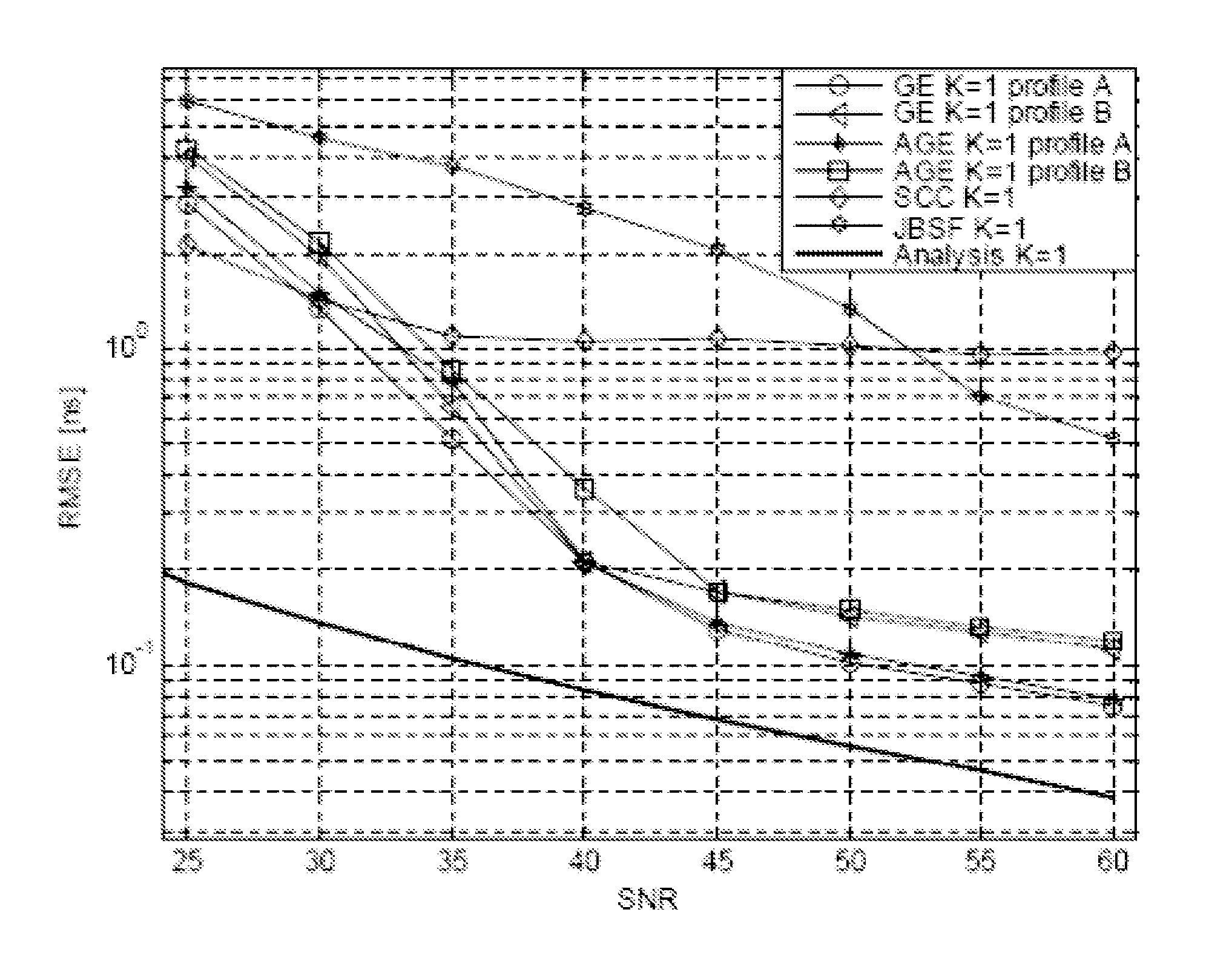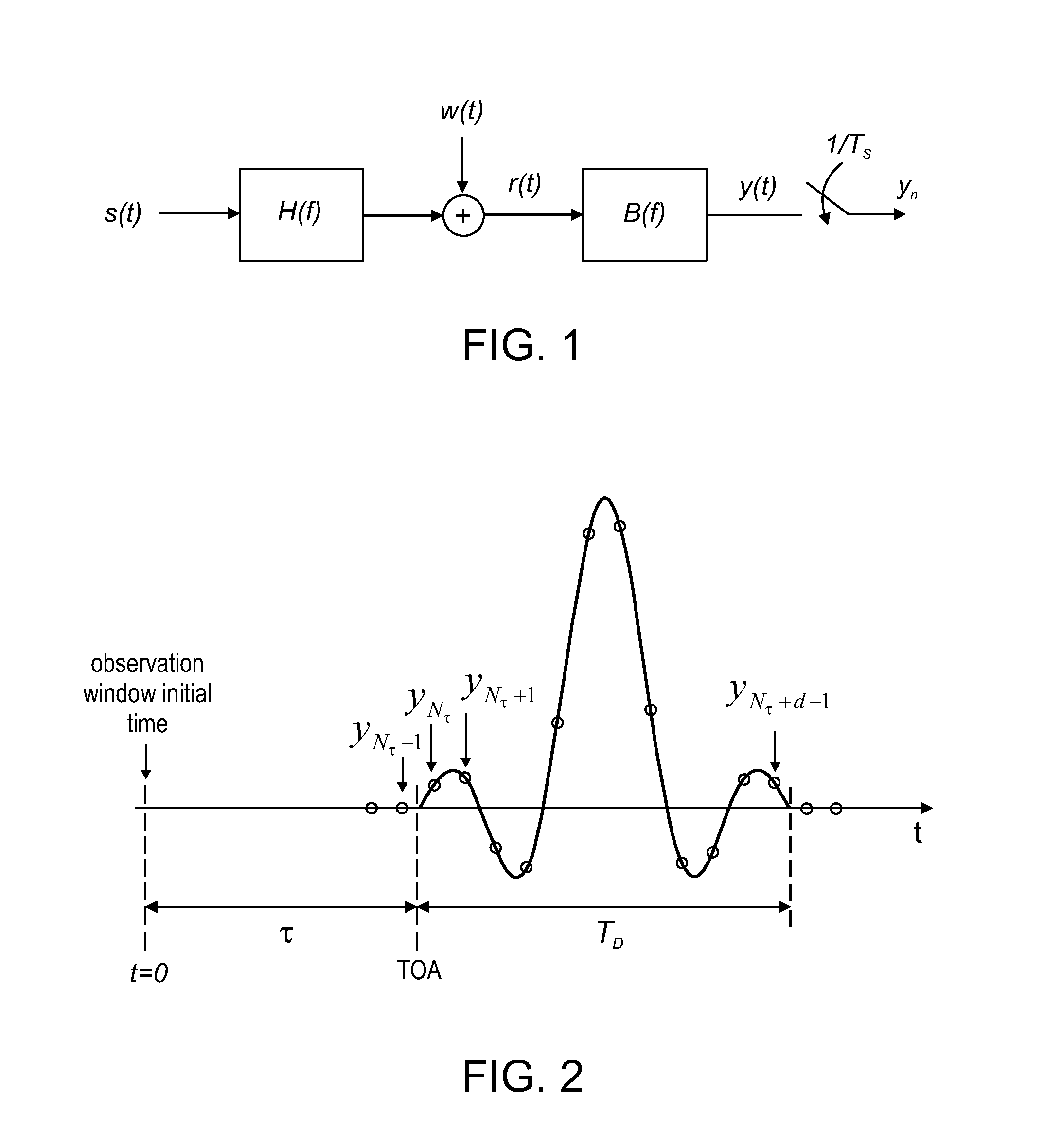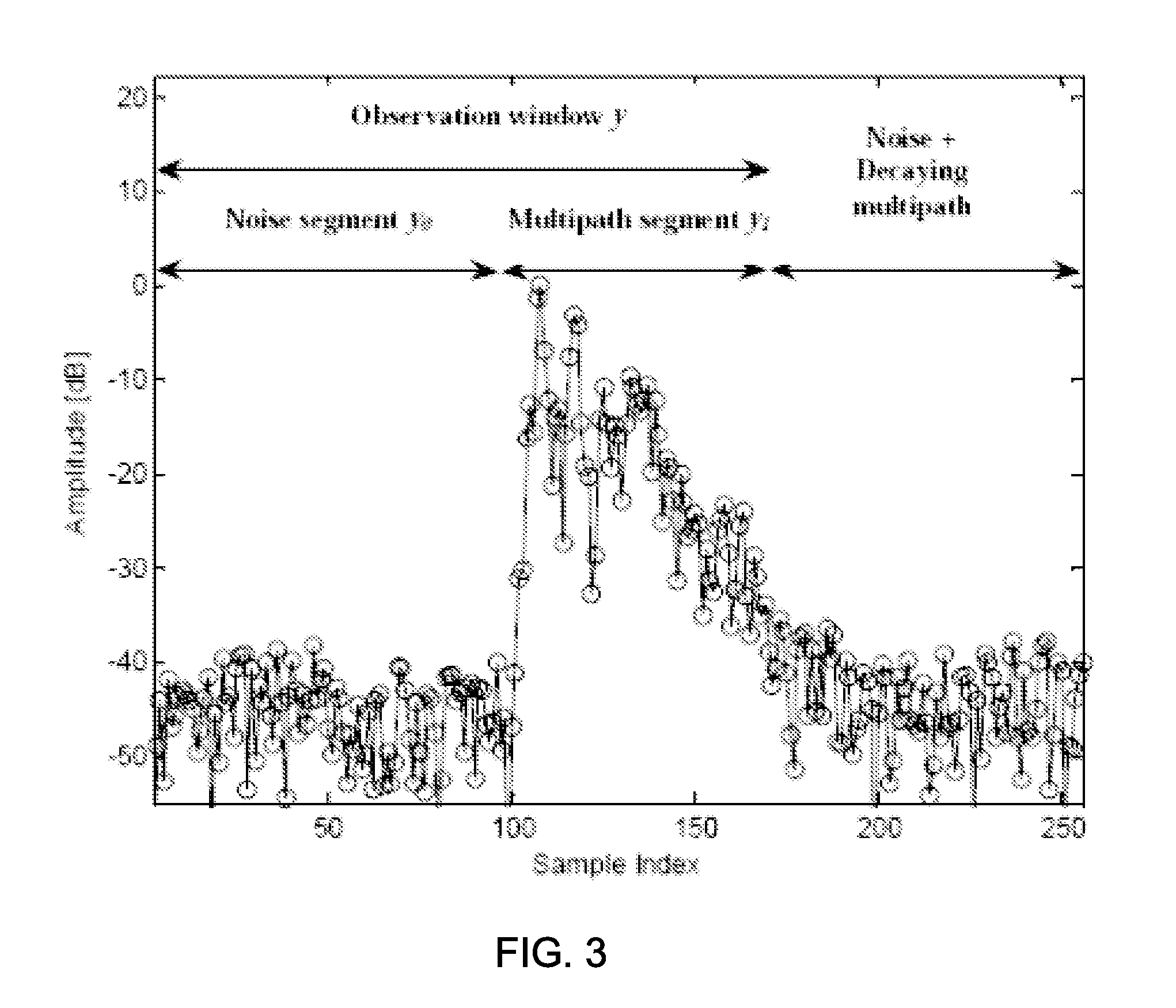Method and system for estimating position
- Summary
- Abstract
- Description
- Claims
- Application Information
AI Technical Summary
Benefits of technology
Problems solved by technology
Method used
Image
Examples
example 1
TOA Estimate
[0225]The present Example describes a TOA estimate procedure according to some embodiments of the present invention. The approach taken in this example is to approximate the received multipath signal as a Gaussian process and derive the maximum likelihood estimator. In order to further decrease the computational load of the new algorithm, a low complexity approximation with negligible performance degradation was developed. The algorithm is useful for either single channel realization or multiple channel realizations using diversity either in time, frequency or space. When applying diversity technique a substantial performance gain is attained due to the optimal combining of the channel realizations and thus reliable TOA estimation is attainable even at low SNR. The estimator's performance can be closely predicted by a closed form analytical error expression.
Introduction
[0226]The range between a transmitter and a receiver can be determined by measuring the signal propagat...
example 2
Direct Position Estimate
[0326]The present Example describes a direct position estimate procedure according to some embodiments of the present invention. The data presented below demonstrate that the direct position estimator of the present embodiments has superior performance compared to the conventional indirect method at low SNR over various multipath channel models and the gap narrows as the SNR increases. A closed form analytical expression that tightly approximated the DPE position estimation root mean square error is also presented.
Introduction
[0327]Position estimation methods can be partitioned into two important classes: direct and indirect position estimation. In the direct position estimation (DPE) the target position is estimated directly from the received signals (the raw measurements), preferably from all reference stations. In other words the received signals are transferred to the server for joint processing. In indirect position estimation (IPE) a few parameters are ...
example 3
Use of Correlated Diversity
TOA Estimation
[0392]Following is an exemplified derivation of the TOA estimator for the case in which the diversity information comprises data received from a plurality of correlated channels of a respective reference station
[0393]Let y0, y1, . . . , yK−1 be K received signal column vectors, each being a different multipath vector. Two or more of the vectors can correspond to the same reference station (for example, the same reference station can transmit in K different frequencies). Collectively, the vectors constitute a diversity scheme. Herein, the vectors y0, . . . , yK−1 are referred to as realization vectors.
[0394]In the present Example, the K realizations are correlated but all are assumed to have the same time of arrival. Given the TOA each vector yk is assumed to have a Gaussian distribution. Let {tilde over (y)}=[(y0)T (y1)T . . . (yK−1)T]T be a concatenation of all the received vectors and {tilde over (R)}=E{{tilde over (y)}{tilde over (y)}H} be...
PUM
 Login to View More
Login to View More Abstract
Description
Claims
Application Information
 Login to View More
Login to View More - R&D
- Intellectual Property
- Life Sciences
- Materials
- Tech Scout
- Unparalleled Data Quality
- Higher Quality Content
- 60% Fewer Hallucinations
Browse by: Latest US Patents, China's latest patents, Technical Efficacy Thesaurus, Application Domain, Technology Topic, Popular Technical Reports.
© 2025 PatSnap. All rights reserved.Legal|Privacy policy|Modern Slavery Act Transparency Statement|Sitemap|About US| Contact US: help@patsnap.com



